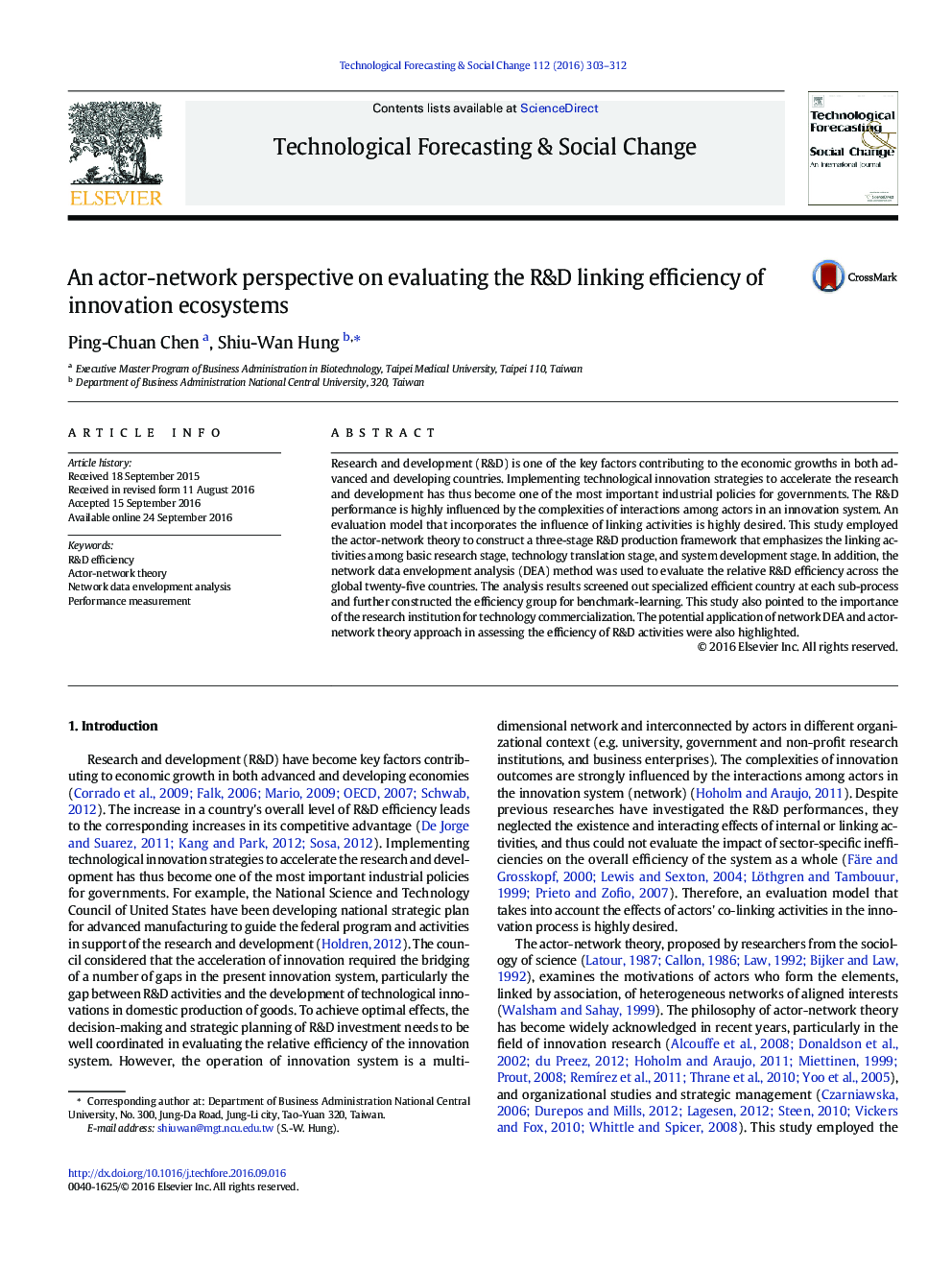| Article ID | Journal | Published Year | Pages | File Type |
|---|---|---|---|---|
| 5037242 | Technological Forecasting and Social Change | 2016 | 10 Pages |
â¢This study employed the actor-network theory for an innovation system.â¢This study constructed a three-stage transformation model.â¢The analysis results constructed the efficiency group for benchmark-learning.â¢This study highlighted the research institution for technology commercialization.
Research and development (R&D) is one of the key factors contributing to the economic growths in both advanced and developing countries. Implementing technological innovation strategies to accelerate the research and development has thus become one of the most important industrial policies for governments. The R&D performance is highly influenced by the complexities of interactions among actors in an innovation system. An evaluation model that incorporates the influence of linking activities is highly desired. This study employed the actor-network theory to construct a three-stage R&D production framework that emphasizes the linking activities among basic research stage, technology translation stage, and system development stage. In addition, the network data envelopment analysis (DEA) method was used to evaluate the relative R&D efficiency across the global twenty-five countries. The analysis results screened out specialized efficient country at each sub-process and further constructed the efficiency group for benchmark-learning. This study also pointed to the importance of the research institution for technology commercialization. The potential application of network DEA and actor-network theory approach in assessing the efficiency of R&D activities were also highlighted.
